Youth of Single Bamboo Drifting Brave Winds and Waves
Publication time:2023-07-26 20:27:34
Written by Editorial Department / Translated by Wen Xiaqing
Speaking of single bamboo drifting, what appears right in your mind must be Yang Liu, a girl dressed in ethereal white pulling off elegant dance moves while drifting on a piece of bamboo on the Chishui River, Guizhou Province in southwest of China. While in Hechi City, Guangxi, there is also a team of single bamboo drifting. Those young athletes drifting on the Longjiang River look like Kung-Fu masters performing exclusive stunts in the world of Wushu, and each has their own story about single bamboo drifting — one traditional art included in China's National Intangible Cultural Heritage.
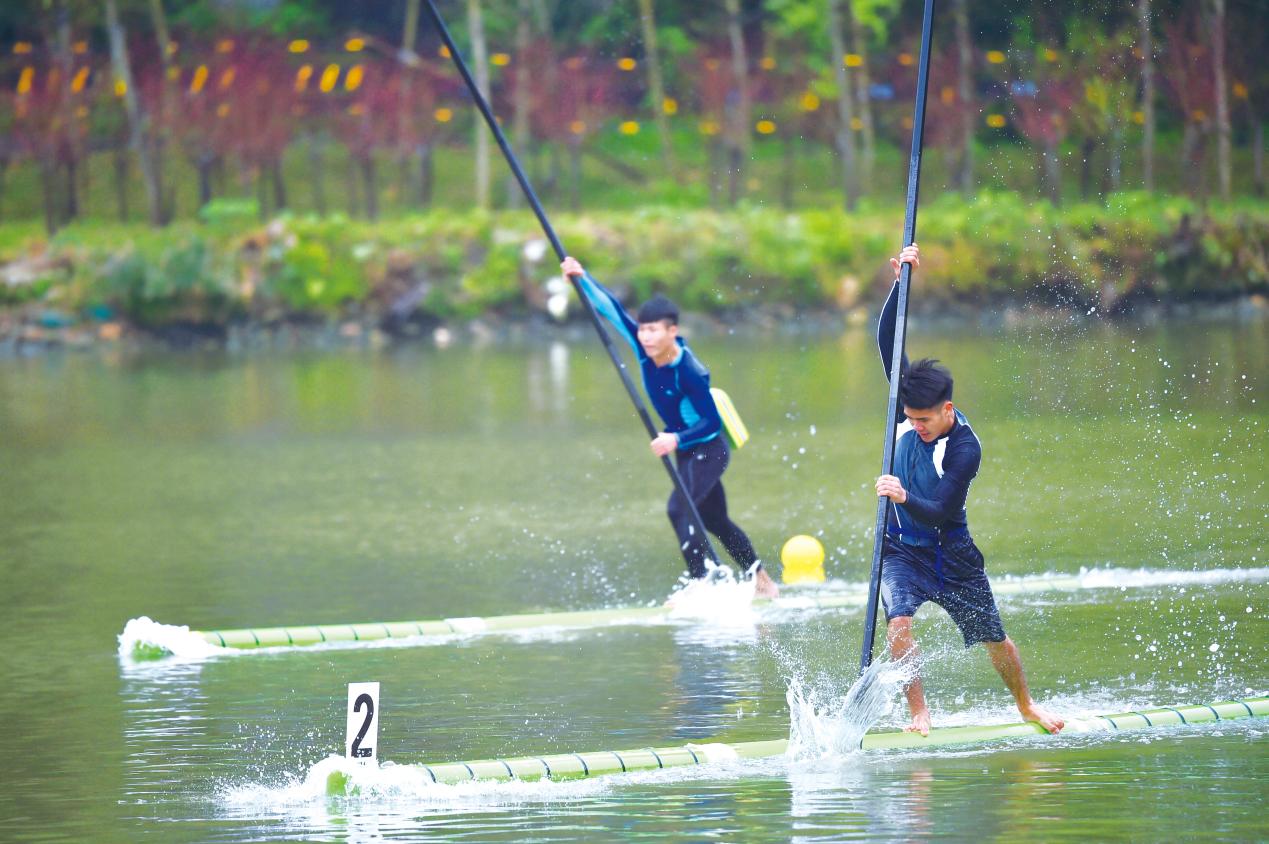
From Chishui River to Longjiang River
On the tranquil Longjiang River in Hechi, over 10 team members are standing still on a single piece of bamboo, another bamboo pole in hand, just waiting for an order. At the go-ahead, they spring into action, pulling hard on the oar right and left alternatively, rowing their bamboo poles like an arrow leaving for its target. Once serene river bubbles with spray, and as they sail by, ripples spread through the river. Though they're on bamboo, they look as steady as if they were standing on solid ground. And as they race and chase at full speed by swinging the oar on alternating sides at the downward current, the whole river bustles with noise and excitement.
Single bamboo drifting, known as bamboo canoes or paddling bamboo oars, is a unique skill that originated near the Chishui River among the local people, who lived in the north of Guizhou Province. It has a history of thousands of years in Chishui City. Back in 1998, ancient tombs from the Han and Jin dynasties were unearthed in today's Ma'an Mountain, Fuxing Town, Chishui City, from which a stone carving of ancient locals standing on single pieces of bamboo with a pole in hand was found.
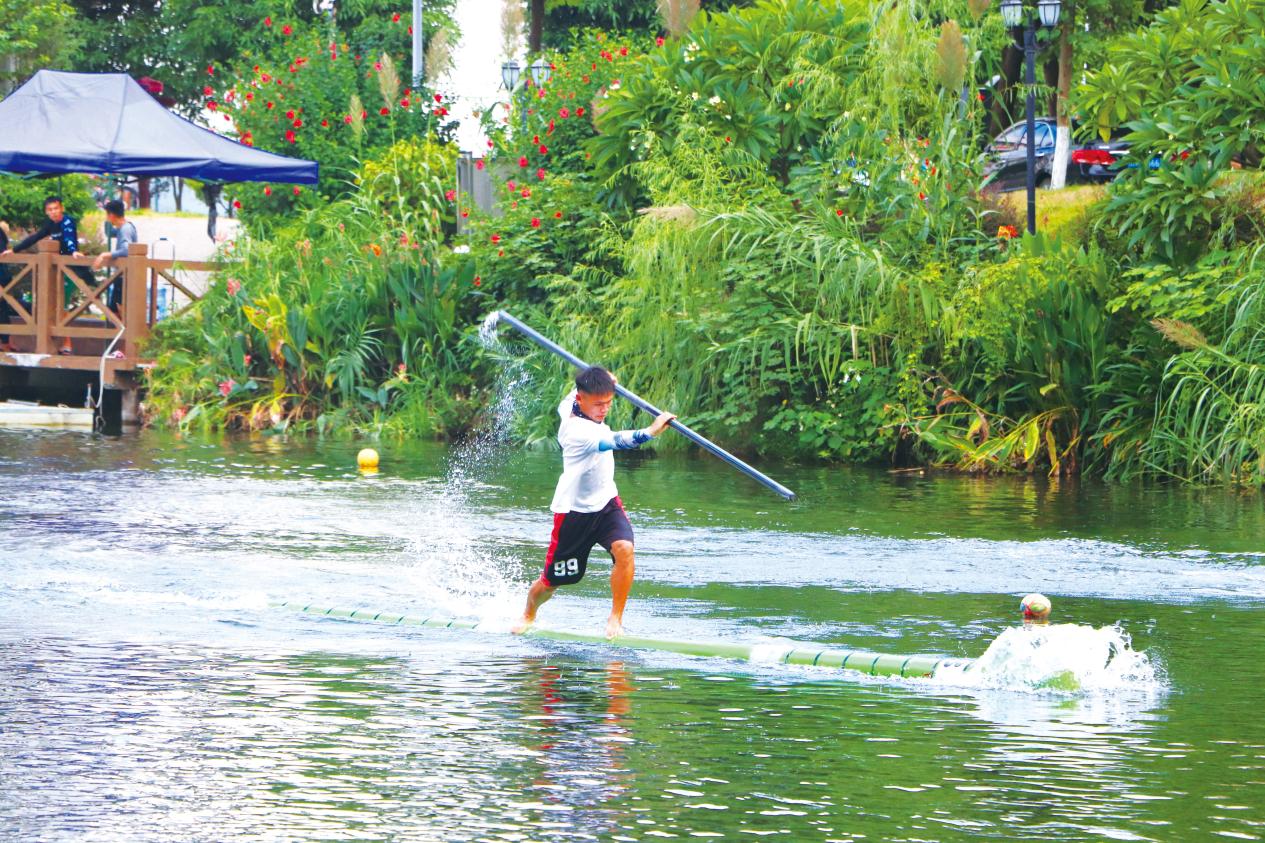
Today, single bamboo drifting performance has become a leading brand of local tourism, attracting thousands to come and learn the secret of its success.
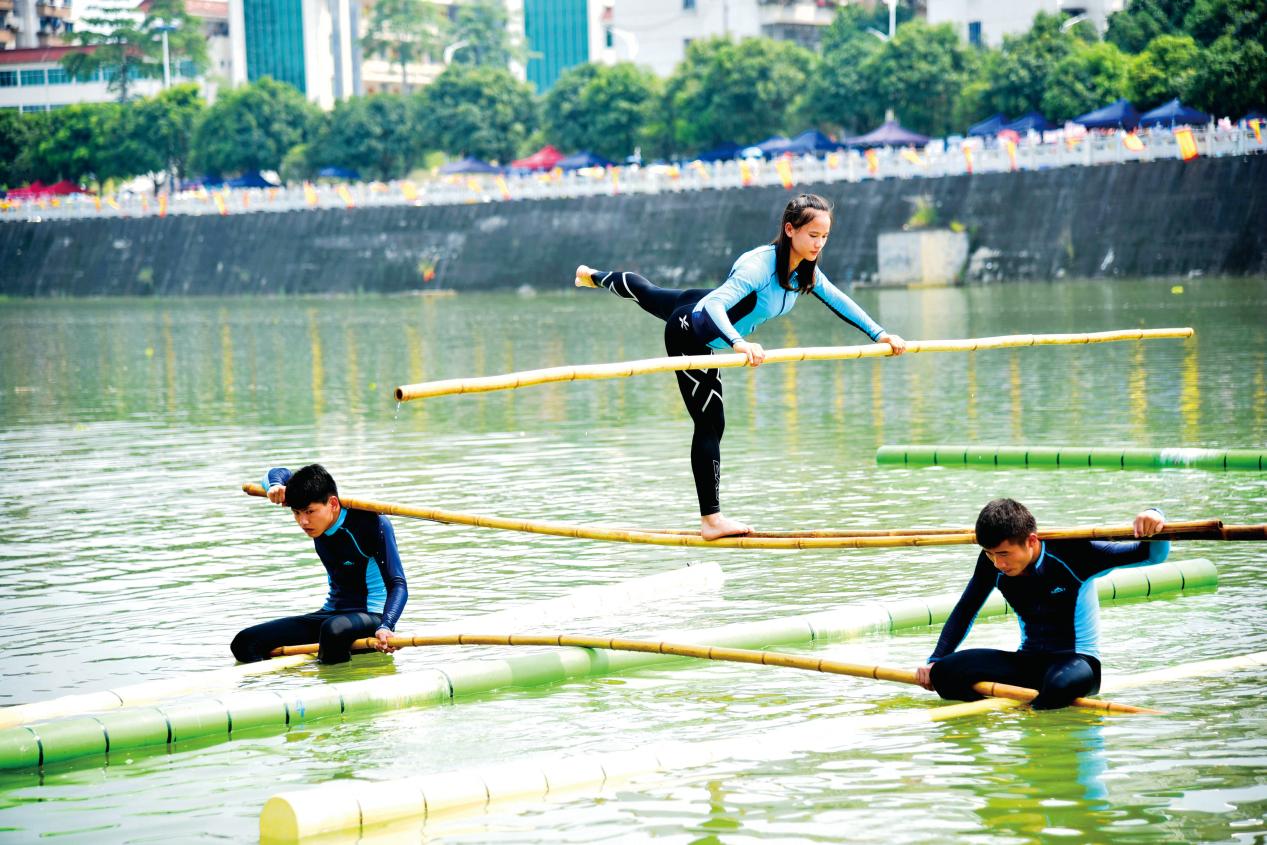
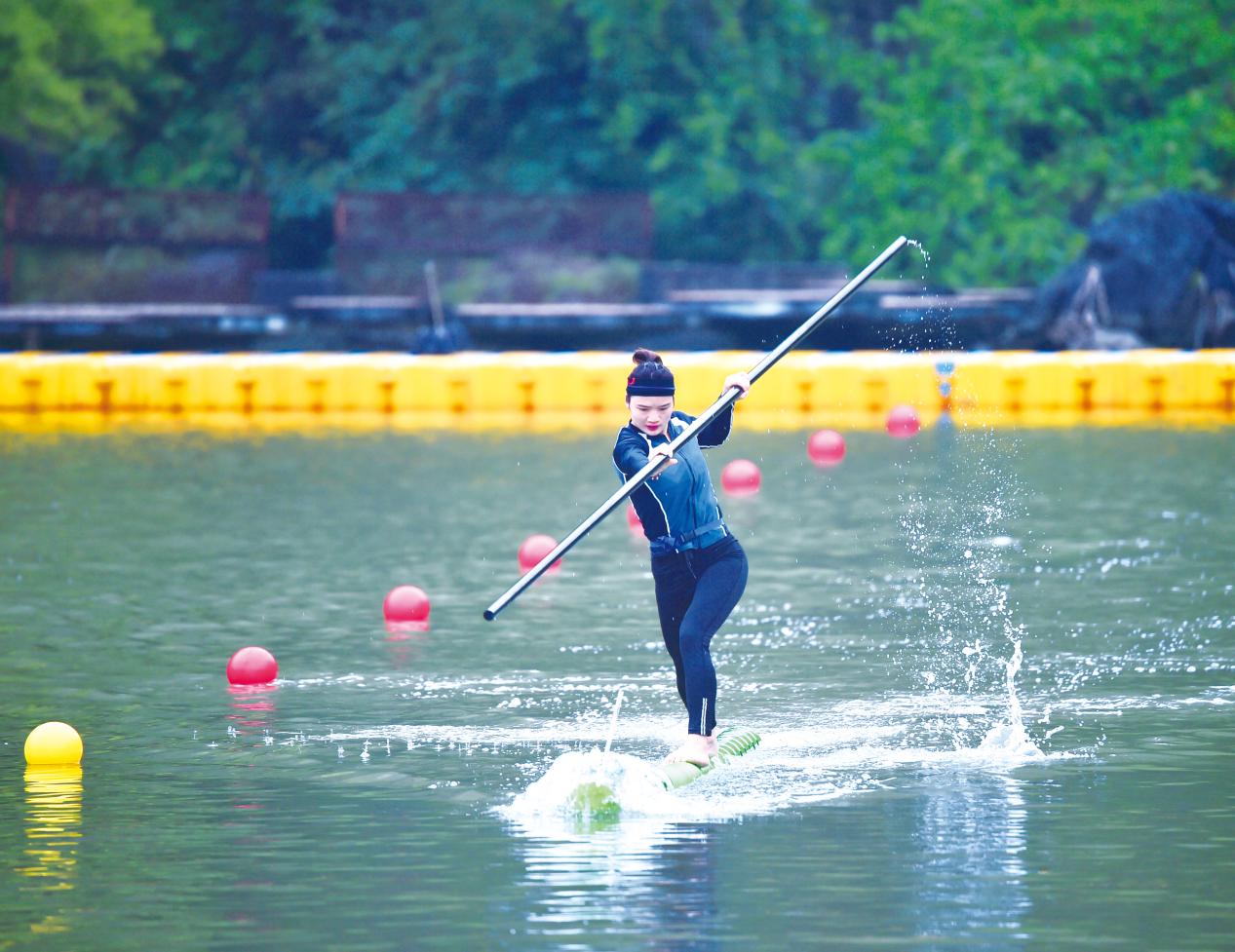
"At that time, I was the only teacher coming to Guizhou to learn single bamboo drifting technique on behalf of Guangxi, and our college happened to be exploring a way to run the college with distinctive features. We thought single bamboo drifting could be our highlight. That's why I spared no efforts in training, I have both duty and responsibility on me," said Lan Jianzhuo, dean of the School of Physical Education at Hechi University, or another special identity — inheritor of single bamboo drifting in Guangxi. Lan told us stories about how the "miracle on water" drifted down the streams, far from Guizhou's Chishui River to Guangxi's Longjiang River.
With the development of water transport, people no longer cross rivers by bamboo canoe, including the Chishui locals. Bamboo drifting has shifted from a production tool to an amusement or a sport. In 1999, single bamboo drifting made its debut at the 6th National Traditional Games of Ethnic Minorities of China and was hailed as the "Wonders of China" by the media.
It was the transformation from a tool to a sport that contributed to Lan's visit to Guizhou. And after the lone traveler received his training there, the single bamboo drifting set sail on a new journey — this time, at a new starting point, with a new mission and vitality.
From Guizhou to Guangxi, from folk art to competitive sports, single bamboo drifting grew unaccustomed to the new circumstance with the new identity, just like most people do, and it didn't chalk up its victory in just days. "In Guizhou, hills are less steep and rivers smoother and straighter, while in Yizhou District of Hechi City, Guangxi, the river flows quite fast, not to mention dangerous shoals and jagged rocks. People can't even stand in water, let alone train themselves to stand in a piece of drifting bamboo pole," said Lan. Due to the geological difference between the two places and the sport's origin, he faced enormous difficulty in training the bamboo-drifting team, when it was still in its infancy. And as the sport itself hasn't been listed in competitive items for long, nobody had an idea where it would go. For Lan, he was walking a completely new path with caution, too.
"Every step you take is new," Lan explained, standing in the training base, recalling days when they were training enthusiastically despite an unknown future. "I wasn't sure where should the single bamboo drifting go, or if there is a destination, how should I get to it. But I keep one thing in mind and that is to beat the Guizhou Single Bamboo Drifting Team — with all our hearts and souls into training despite hardship."
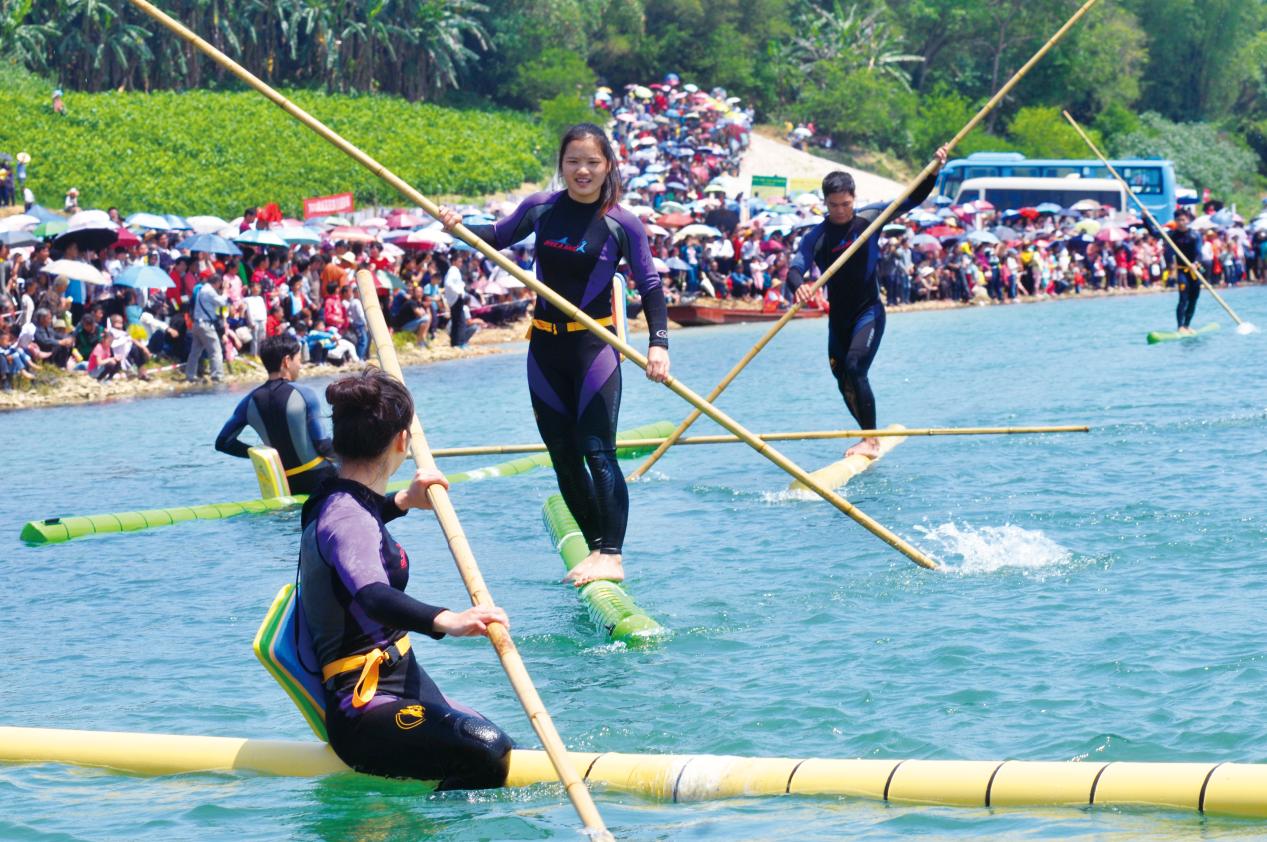
Since its inception, the obstacles Lan and his team encountered were unprecedented. Except for those stubborn extrinsic factors, such as unfavorable circumstances, they are stuck in the mud for lacking specific training grounds, equipment, and experience.
Without a training spot, Lan then led his team running around for one — nearby Longjiang River or faraway Xiajian River and Hongshui River — and though they fell in rivers time and again, yet come back strong and stood firm on pieces of bamboo, braving winds and waves.
As a newcomer in a competitive event, single bamboo drifting has no clear stipulations on its apparatus or rules. Besides, the former training experience of the Guizhou locals might not apply to drifting training as a competitive sport. Lan had to embark on a new journey searching for proper training based on years of experience. He led his team into daily routine, including strength training, doing handstands on balance beams, spinning, planking, and holding breath underwater — anything that is conducive to winning a competition will be included in Lan's training package. "We are all rolling up our sleeves, hoping to have some big wins in a sports event. Even if there seems no certain path to success, we'll figure out a way to it," said Lan.
Since then, his tortuous road to success gradually became clear. Lan led his team into national and regional competitions, chalking up a couple of good wins — 40 gold medals, 52 silver, and dozens of bronze ones. They beat other teams at the national competition and came out in front, after finding a training method suitable for them with strenuous efforts.
Inheritance of a piece of bamboo
"Feet steady. Body straight. Don't be afraid of falling into the river, because the more you fall, the more you learn how to keep your balance," said Wei Yangzhe at the single bamboo drifting training base in Hechi University, or "Jinchi laoyue", meaning to fish the moon in a gold basin. She wore a black, clingy training suit with a duckbill cap on her head, standing at the bank patiently giving instructions to those who fell several times into the basin because of losing balance. She looked cute and tiny set off by her sturdy team members, and nobody had ever imagined that such a slim girl could possess huge explosive strength, excellent flexibility, and sense of balance.
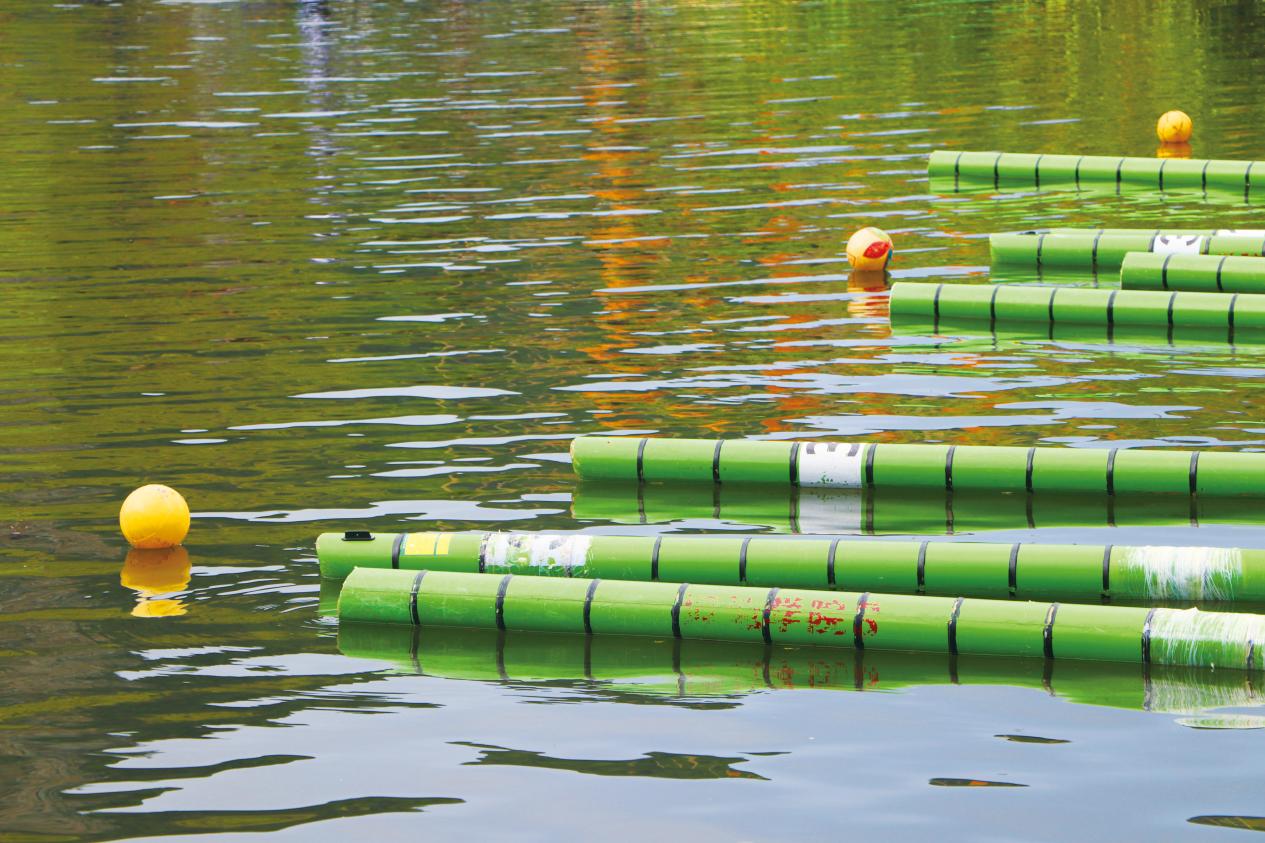
Wei was a woman of the hour at the school's sports ground and a key player in Lan's single bamboo drifting team. She made her debut at the 13th Sports Meet for the Ethnic Minorities of Guangxi, in 2014. It was her first large-scale game, and as it was raining and blowing hard, most of her contenders, one after another, fell into the river due to waves made by strong winds, while Wei took the lead and became the champion of 60-meter single bamboo drifting thanks to the hard training and her marvelous sense of balance. After the event, she dubbed that day's competition as "truly braving winds and waves".
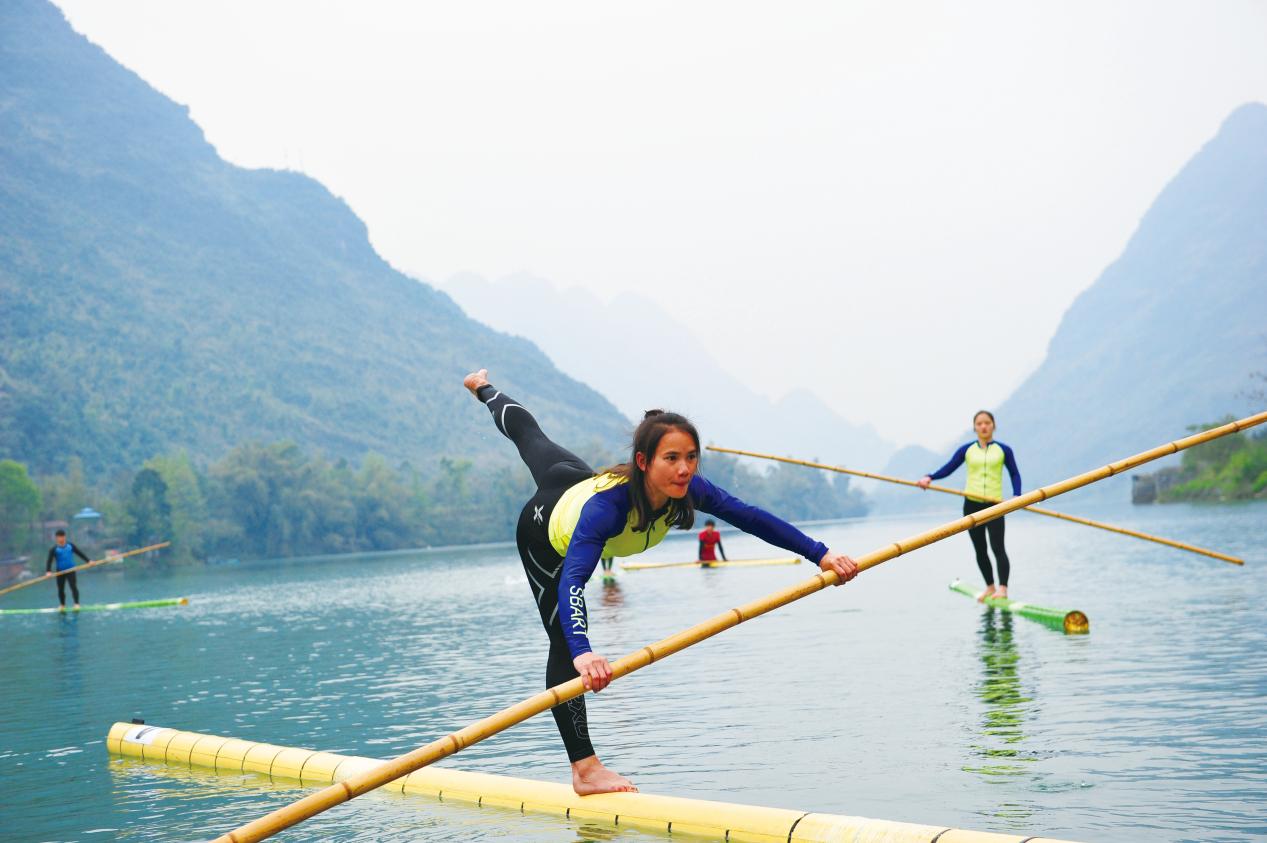
"Single bamboo drifting is a kind of water sport, and accidents could happen at any time during a competition, which puts higher requirements on the stamina and ability to improvise of an athlete. That's why everyday training is so crucial," Wei said. "Unlike track and field sports which pursue only speed, nor weightlifting only strength, single bamboo drifting requires integral skills needed by various sports. It's testing, but I find it intriguing."
"I gulped way too much pool water that day," Wei snorted with laughter when talking about her first day of training. Now she is already able to speak — with ease and humor — about the unpleasant memories of falling into the water when she started training. "Scars and pains aren't the hardest things, but overcoming the trembling fear of drowning. I can't swim, and as I repeatedly fall overboard, fear grows. But the more daunting it seems, the more I wanna make it big. To help me conquer my fear, the coach gives me a basin and trains me in private on how to hold my breath. Gradually, I no longer fear anymore.
As the moon waxes and wanes, gone are the days and the members of the single bamboo drifting team after graduating from the University. Lan still stays behind. He is the one who brought the sport from the Chishui River to the Longjiang River and will see it through till it sails to a larger stage. Those who were callow and young are now able to work on their own, including Huang Shiji and Wei Yangzhe. They are cultivating the next generation of single bamboo drifting teams, and as they do it with enthusiasm and passion, it's not only an inheritance of a piece of bamboo, but also, their belief.

